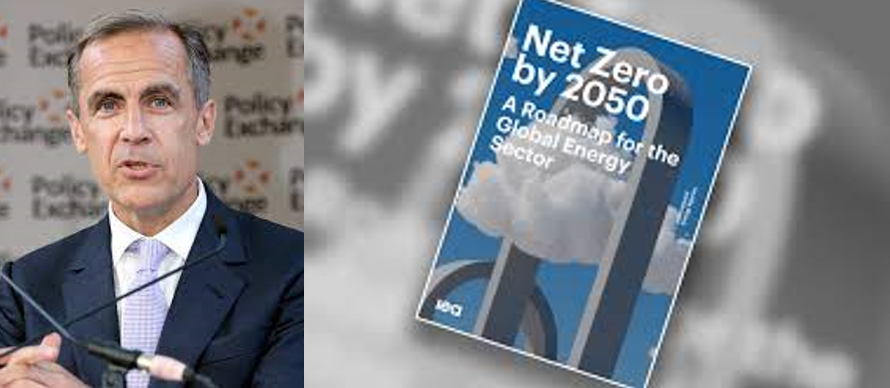A decade after Carney’s warning, finance still chooses short-term profit over long-term survival
Ten years ago, then Bank of England Governor Mark Carney stood in Lloyd’s of London and warned that the global financial system faced an existential threat of growing climate risk. A decade later, Lloyds exposed the failure to heed this warning with an announcement to its insurers that they should feel free to underwrite coal projects, despite acknowledging growing threats from extreme weather.
This example captures the conundrum: the financial industry will knowingly finance its own demise. Lloyd’s CEO characterizes his stance as being “apolitical,” but that’s not quite right. It’s more that the system incentivizes financial institutions to compete with one another to earn short-term profits despite those activities undermining conditions for everyone to thrive, or even survive, later. That’s very political, especially since the financiers understand what’s going on, yet do it anyway.
The Warning That Sparked a Movement
Carney’s speech kicked off a host of initiatives – like the Network for Greening the Financial System (NGFS) and the Glasgow Financial Alliance for Net Zero (GFANZ) – to try to integrate climate risk management into the global financial system, so it’s worth taking some time to see how his speech diagnosed the problem, since it has helped shape the inadequate response.
Carney deserves credit for sounding the alarm. While others had been doing so also, his position as Governor carried the institutional weight needed to have it taken seriously. The speech was titled “Tragedy of the Horizon,” which captured his thesis that the fundamental problem was that financial companies base their decisions on a short time horizon while climate risk hits harder only in the medium to long term. And yet, financial decisions being made right now help lock in undesirable future climate outcomes.
The speech proposed better information as the solution. That stronger climate risk disclosure would bring that horizon closer so that financial companies would integrate climate risk into their decisions right now.
As a result, what we have seen from NGFS, GFANZ, and a range of related initiatives has been a focus on climate disclosure. Prudential supervisors like Canada’s Office of the Superintendent of Financial Institutions have implemented things like B-15 Climate Risk Management guidance. And, banks, insurance companies, and asset owners/managers (initially) signed up with GFANZ and began to voluntarily disclose financed emissions and to integrate things like climate stress testing for their portfolios.
Disclosure Without Consequence
Yet, as Lloyds’ actions shows, there is a disconnect between this kind of risk analysis and deal-making on the ground where the financial firms actually make their money. Canada’s big banks, for example, despite all setting net zero pledges, haven’t budged from pouring billions into fossil fuels and joining the oil and gas industry in lobbying for more of the same.
Climate risk is often broken out into transition risk – how companies may be affected by the economy shifting to low-carbon activity – and physical risk – how financial firms may be affected by climate impacts like extreme weather.
On transition risk, one Canadian executive in a moment of honesty at a conference last year characterized the investment game as staying in as long as possible to extract the profits from polluters, but then getting out fast to not be the one left holding the bag. Nobody wants to be either the first or last out. And, everyone knows it ends badly.
Canada is particularly exposed to transition risk given our extensive investment in the oil sands. Not much discussed is the exit of most non-Canadian companies and financiers from the Canadian oil sector, both an indicator of where global capital sees the wind blowing, and a concentration of risk in Canadian hands. Meanwhile, China is not just rapidly turning itself into an “electrostate,” but helping to transform other economies in a similar way too.
On physical risk, while extreme weather is indeed now costing Canada tens of billions each year, the financial industry is content as long as this stays on someone else’s balance sheets – either individual Canadians in the form of higher insurance premiums, for example, or else on government balance sheets picking up climate damage costs.
All of this works fine for the financial industry, until it doesn’t. At this stage, climate risk is unidirectional, going up. And, climate scientists will remind you that it’s not linear, but that there are tipping points which create accelerated chaos. The financial industry does not exist on an alternative planet, and is as dependent on a stable climate as everyone else.
Why Only Regulation Will Work
Better climate disclosure will not fix this problem. The financial industry is full of smart people, many of whom are personally sympathetic to climate action, but they are incentivized professionally to act in a certain way. Carney’s speech should have instead stuck to the more common “tragedy of the commons” analogy more appropriate to the situation, whereby financial firms are wired to engage in short-term self-maximizing activity which is eroding the conditions for their and everyone else’s business.
The implication, though, is that the only way out of that conundrum is regulation, not just providing better risk information, but actually forcing financial institutions to change via new rules and incentives. This is the gist of a statement endorsed by over 50 groups active in climate finance around the world to mark the anniversary of Carney’s speech. But, this is seen as a third rail by the financial industry, and even by those who regulate it, since it is seen as intervening in the market, picking winners and losers.
Yet, here we are, on the road to collectively losing together, with the existential threat Carney named still growing. As Prime Minister now, he has the ability to deploy more tools from the financial regulatory box should he choose to. Unfortunately, the current debate instead in Canada is to drive the country in the direction of increasing both transition and physical risk via new fossil fuel megaprojects, dressed up as “nation building.” The tragedy, then, continues unaverted.



